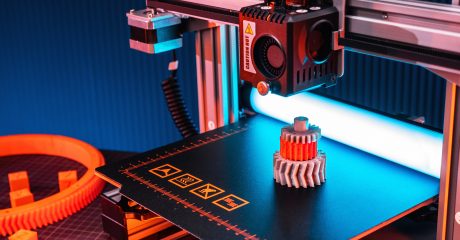3D printing is a popular manufacturing process with wide acceptance because of the quality it delivers. In terms of improving the strength of 3D printed parts, there are many things that come to play. This article will provide details on how to make solid 3D prints and will be helpful for those who either have a personal 3D printer or want to outsource rapid prototyping services.
Printer Settings
There are many settings on your 3D printer that you can tweak for a high-quality and strong print. Below are how to make strong 3D prints using those settings.
- Increase Infill Density – One way of increasing the strength of a 3D print is by increasing the interior density. The interior density ranges from 0% to 100%, with zero meaning totally hollow, while 100 means totally solid.
- Increase Wall Thickness – The wall thickness of a 3D printed material is measured by “Wall Line Count” and “Outer Line Width.” It shows how thick the wall is. Increasing wall thickness will increase strength as 3D printed parts have more strain on the outside than the inside.
- Use Thinner Layers – Using a thin layer will lead to better adhesion and density between subsequent layers, which strengthens 3D printed parts. Designers have said that going as low as 0.1mm (100 microns) will maximize strength.
- Use a Strong Infill Pattern – Another way of reinforcing 3D prints is by using the right infill pattern. Infill patterns work with infill density, and they serve as an internal support structure for 3D prints. They also add some stiffness to the part and prevent wall deformation.
- Reduce Cooling – Cooling is an important process in 3D printing which affects the adhesion of layers after setting. Quick cooling can reduce the adhesion due to a subsequent layer’s inability to bond with another.
Selecting a Strong Material
In 3D printing, there are some materials that are known to be weak. Therefore, making a strong 3D print can be about using strong 3D printing materials. There are three major materials with properties synonymous with strength. They are as follows:
- ABS: ABS is a great 3D printing material for making strong prints that are not suitable for heavy use. It is a thermoplastic with tough and light properties, which makes it a top plastic polymer in 3D printing.
- PLA: PLA is an expensive 3D printing material suitable for prints with heavy use and high resolution. It has a tensile strength of 7250 psi but will degrade on exposure to light.
- PETG: This is a new filament recently gaining popularity due to its strength. It has a tensile strength of about 4100-8500 psi which makes it stronger than PLA but weaker than ABS. However, it is less flexible than PLA and more than ABS.
Other Considerations
Tweaking the 3D printer settings or changing out your materials are not the only ways to make a 3D print strong. Aside from the epoxy coating, which is a post-processing method, there are other methods you can use. Below are two key methods that are growing in popularity.
- Annealing 3D Prints – Annealing is a method that subjects 3D prints to an increase in temperature for strengthening purposes. It’s said to cause about a 40% increase in strength after use and is compatible with materials such as PLA, ABS, PETG, and ASA.
- Electroplating Plastic 3D prints – Electroplating is a popular method due to it being practical and affordable. It involves putting the 3D print in an electrolyte and a plating metal (popular industrial metals are zinc, chrome, and nickel). On passing an electric current through the electrolyte, the metallic ion forms a coating around the 3D print. This leads to the formation of durable and long-lasting 3D prints.
Call Custom Tool Today!
No matter the challenge, Custom Tool & Grinding ensures you get the best and are working with the best. We provide quality and experience to help you secure the services and products you need. Contact us to learn more about how we can help you.
